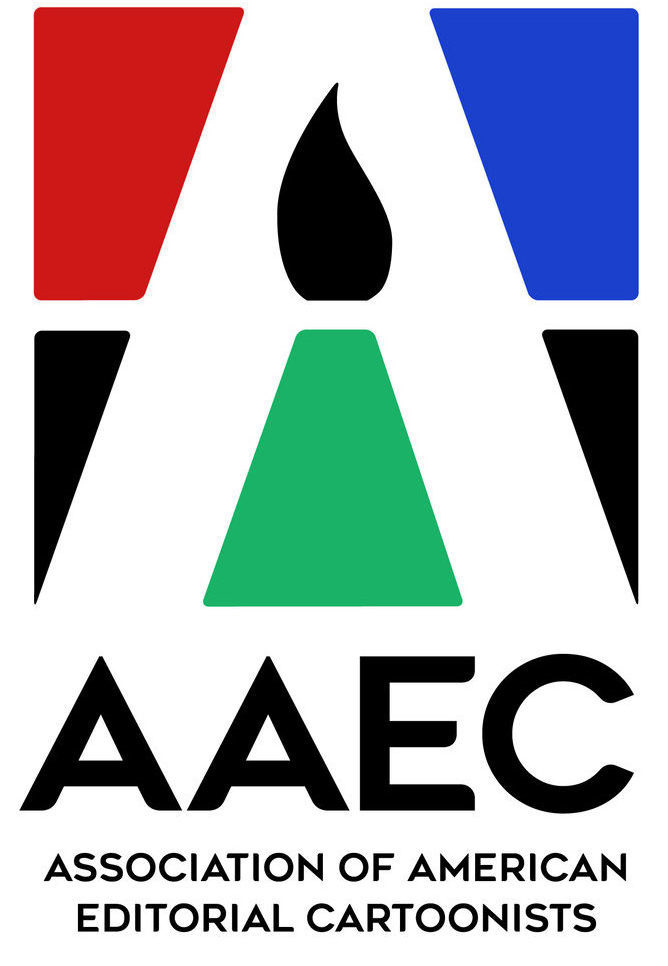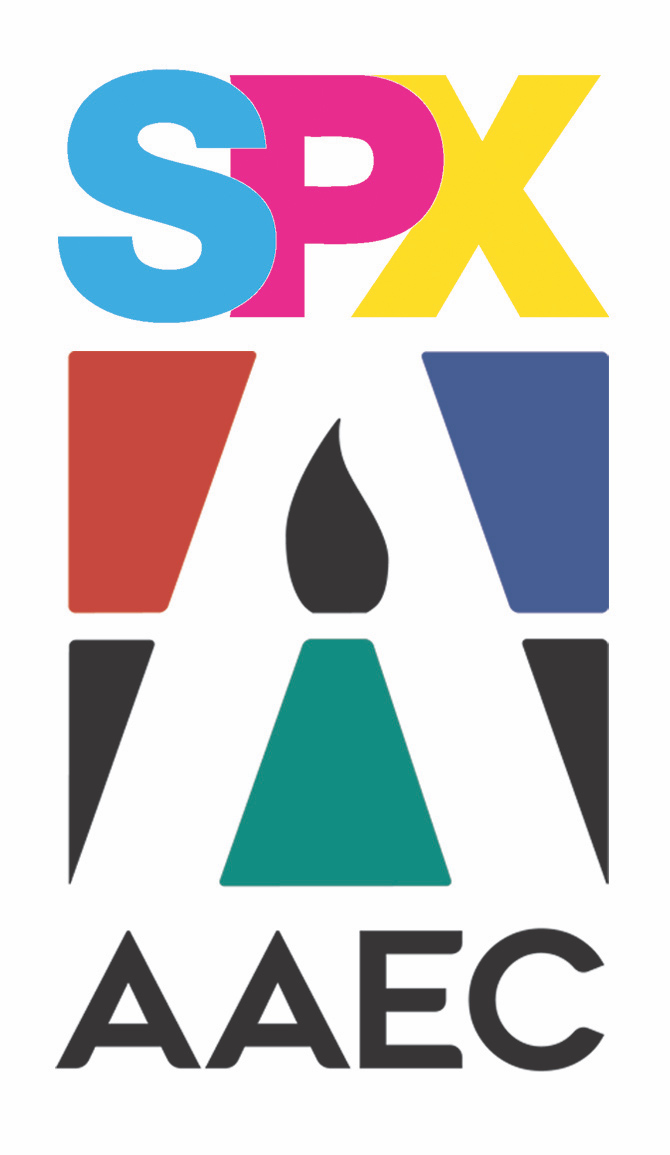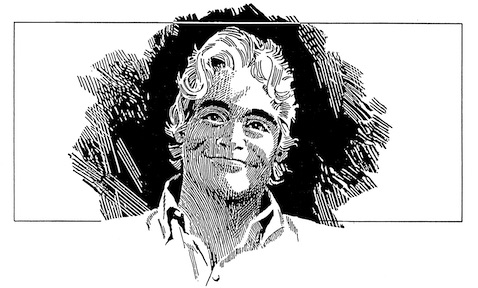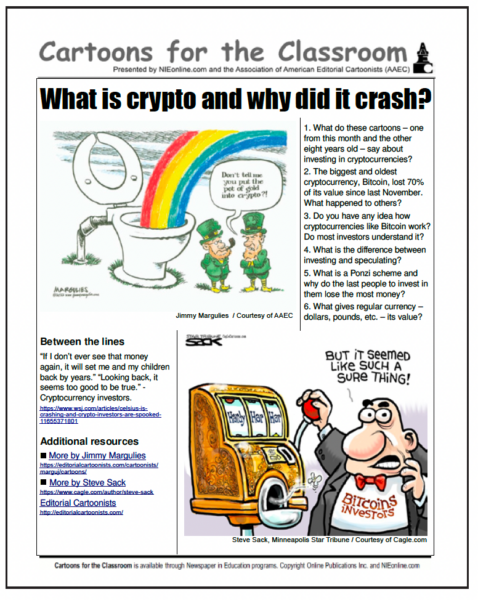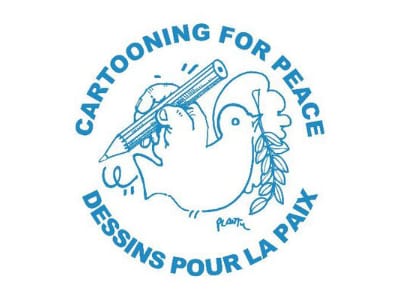Dick Locher’s Dick Tracy Statue Debuts
Chester Gould’s iconic character Dick Tracy made one big tip of the yellow fedora when his nine-foot, one-ton bronze likeness was installed on Naperville’s Riverwalk, 26 miles southwest of Chicago, on April 11.
The idea for the sculpture was born from the strip’s artist of more than 30 years and now its current writer, Dick Locher, and Naperville Century Walk Corp. president W. Brand Bobosky.
Locher, a 40-year Naperville resident, sculpted a Tracy maquette that Bobosky thought would make a beautiful life-size statue, joining the more than 30 public art pieces the Naperville organization has installed in the last 15 years. Locher is also a direct link to Dick Tracy creator Chester Gould, having served as Gould’s assistant for several years.
For more than 78 years, the square-jawed detective has graced the comics pages of newspapers around the world, as well as books, television, film and a multitude of licensed products. Tracy has become an indelible part of American culture.
Wisconsin sculptor Don Reed transformed the maquette created by Locher into the larger-than-life sculpture. Reed, a loyal follower of the Dick Tracy comic strip, was intrigued with capturing the structure of Tracy’s angular face, the flow of his hallmark trench coat and the sense of energy and motion Locher conveys of the detective in the strip. He said that “thinking of the character as fully round, while creating strong lines and paying close attention to detail were essential to accurately depicting Tracy’s likeness. “My goal has been to create a lifelike, positive impression that viewers will take away with them.”
Reed combines state-of-the-art technology with Old-World techniques, traditional craftsmanship and careful attention to the smallest details to produce his unique sculptural portraits.
Beyond Dick Tracy, Locher is a nationally syndicated editorial cartoonist who has won numerous awards, including the Pulitzer Prize. His work has appeared in Life, Time, Newsweek, U.S. News and World Report, Forbes, Playboy, The Congressional Record and hundreds of newspapers throughout the world.
• • •
From David Horsey comes this announcement: “Hey, gang, I wanted to let you know about my latest online endeavor. I am producing a series of photofilms for Hearst and msnbc.com. It’s my latest attempt to diversify just in case this cartooning gig doesn’t work out. Here’s the link to the third one (the first two pop up right after this one, if you care to see them): www.msnbc.msn.com/id/35920663/ns/us_news-life/#36319642
• • •
Some good new from John Auchter: “In March I began providing editorial cartoons to the Grand Rapids Press, the local daily paper for Grand Rapids, Michigan. “The reason for this is both admirable and maybe a little bit startling: They are trying something different. The Press is trying to play up its strength of covering local/state issues by providing readers with a local/state editorial cartoon in its Saturday editions. As a reader (and especially as the cartoonist), I admire that. It’s startling because, over the past decade as newspaper readership has accelerated into decline, most newspapers have made a point of not trying something different, hoping against hope for better times. But the Press’s editor, Paul Keep, has a pretty clear vision for moving forward, and I’m enthused to be part of that vision.
“For the previous 14 years I have drawn editorial cartoons for the weekly Grand Rapids Business Journal. I will no longer be doing those cartoons, which was somewhat disappointing. It seemed a little archaic in this post-apocalyptic newspaper world that they would insist on a non-compete, but so it goes. Of course this was a blow to my plans for complete domination of all publications “Grand Rapids.” (I don’t know what they have going on in Grand Rapids, Minnesota, but they were next on my list.)”
• • •
And from Rob Tornoe: “I’m happy to announce that starting with March’s issue, I’m back drawing cartoons for Editor & Publisher magazine. “Back in December, there was a bit of a scare when Nielson Company decided to shutter the magazine after it was unable to find a buyer. However, in the middle of January, the Duncan McIntosh Company, which publishes Boating World, announced that it was buying E&P, saving an institution to nearly everyone in the newspaper industry."
Rob clearly believes print isn’t dead, as in April he announced that he would be part of a Delaware team launching a new magazine. Called “Laugh!,” the new humor and arts magazine covering Northern Delaware will hit the streets in July.
Said Tornoe in a blog post, “People are quick to point out that with the internet, they can read everything they want on their glowing, irritating computer screen. And for the newspapers it makes sense, since newspapers only seem to want to print yesterdays news and sell it to you tomorrow, while cutting all the cool stuff everyone loves in order to save a buck.
“But we’re not newspapers. We know what people love, so we’ve packaged all the great humor and comics that used to fill most publications, paired it with some great coverage of the often-overlooked arts and cultural scene in Northern Delaware, and that’s our recipe for success. People just want a good Laugh!
“The first issue will come out at the end of June. It will be distributed free in and around Greater Wilmington, but you can also sign up for a subscription if you want every issue delivered directly to your mailbox every month.
“And feel free to send me any funny jokes, photos or ideas you think will bring a smile to someone’s face. We even have our own Laugh! Blog that will be devoted to bringing you the funny stuff the internet has to offer."
• • •
In March, Pioneer Press has announced that Chicago Sun-Times cartoonist Jack Higgins will also be drawing a weekly cartoon for them and The Doings newspapers. Higgins says he’s still working for the Sun-Times, but will be providing weekly local cartoons to the other two publications which are owned by Sun-Times.
In other Higgins news, Northwestern University Press has published a collection of his work entitled “My Kind of ‘Toon, Chicago Is: Political Cartoons.” with a forward written by Roger Ebert. The book has 300 or so cartoons, half of which are based on local and state issues. It’s now in its third printing.
• • •
Speaking of new books, Keith Knight announced that his first collection of his daily strip “The Knight Life,” arrives in June, and can be ordered at Amazon.com.
• • •
When the space shuttle Discovery launched on April 5, bringing supplies and new science experiments to the International Space Station, it also carried two unique pieces of cargo — cartoons drawn by Omaha World-Herald cartoonist Jeff Koterba.
As his cartoons prepare to be lifted into space, Rob Tornoe asked Koterba about the honor and what he thinks about manned spaceflight moving forward.
Q: How did your cartoon end up on one of NASA’s final space shuttle flights?
A. Clayton Anderson, the only Nebraska-born astronaut, will be flying on the upcoming shuttle flight Discovery. I first “met” him in 2007 when he emailed me from the International Space Station to tell me how much he enjoyed a cartoon I had drawn about him. Since then we’ve kept in touch. Last fall he invited me to draw two cartoons that he could take on the shuttle — he suggested that one cartoon be given to my newspaper, The Omaha World-Herald, and the other I could keep for myself.
The shuttle mission your cartoons will fly on is one of the last four remaining space shuttle flights planned by NASA. How do you feel about the end of the Space Shuttle program?
The shuttle has been such a workhorse and has kept a U.S. presence in space for nearly three decades, so certainly I’ll be sad to see it go away. And I guess I would feel a lot better if we definitely had a solid plan in place to replace it.
Do you have an opinion about Obama’s proposed future for manned space exploration?
As you might guess, I’m a huge fan of space exploration … I have never bought into the argument that we must solve all of the world’s ills before traveling into space. If that were the case we’d probably all still be living in caves. The direct and indirect benefits of space travel go beyond just the scientific and economic. There is a great yearning and need for humans to explore, otherwise, we will become stagnate. In learning about the universe, we learn about ourselves. If we don’t have space exploration, that’s like saying we might as well not have great art or great music — what’s the point of being human, of being alive?
Regarding funding, I’m not opposed to private and commercial development, though I’m not sure how I would feel about the Taco Bell-Doritos-FedEx Mission to Mars.
• • •
In April, Atlanta Journal-Constitution columnist and blogger Jay Bookman provided a funny story about how on the day that Georgia House Speaker David Ralston was to be the guest speaker at a dinner to honor Mike Luckovich, Mike’s cartoon that morning depicted the speaker as a stripper.
Ralston admitted later to being a bit taken aback. “What a coincidence,” he thought, that his first starring role in a Luckovich cartoon would occur that very day. But to his credit he never thought about withdrawing from the event, which was sponsored by the Georgia First Amendment Foundation.
That evening, however, sponsors of the dinner were a little nervous, worried that hard feelings might mar the event. As it turned out, the concern was groundless.
When Luckovich showed up at the Woodruff Arts Center to receive the foundation’s highest award, the 2010 Charles L. Weltner Freedom of Information Award, he brought with him the original version of the cartoon to present as a gift to Ralston.
In the margins of the cartoon, he left a note pointing out that he had once drawn Ralston’s famous predecessor, the late Speaker Tom Murphy, wearing nothing but a diaper. In other words, nothing personal. A grinning Ralston gladly accepted the cartoon.
• • •
In April, Kevin “Kal” Kallaugher was the final guest cartoonist to speak at the Nasher Museum of Art at Duke University in Durham, N.C., as part of the “Lines of Attack: Conflicts in Caricature” exhibit. Earlier speakers included cartoonist Peter Kuper and cartoon historian Chris Lamb.
Kal joined Dr. Geoffrey D. Baym for a panel discussing “Satire and New Media”. Dr. Baym, the author of “From Cronkite to Colbert: The Evolution of Broadcast News” and a professor at UNC, studies the media and pop culture — and actually gets paid to watch The Daily Show.
Both panelists have spent the last couple of years studying and exploring the impact of technology on news and commentary, and what it might mean to cartoonists in particular, and satire in general.
Baym said he sees satire as a point of intersection between old media and new media. “The internet is democratizing satire … similar but different [from what we’re used to], an emergent form of satire” that allows anyone to contribute their take on an event or situation.
“Irony has become a generational language,” added Baym, not limited just to comedians and cartoonists.
Case in point: Baym showed a slick commercial parody by a real company satirizing the recent supreme court decision allowing corporations to give unlimited political donations. The commercial, which got hundreds of thousands of hits on YouTube, suggested we “just cut out the middle man” — the politician — and simply elect the corporation to congress so they can write the laws that are going to get written anyway. The company has since tried to get on the ballot in Virginia (they were rejected), but is now hoping to use this satirical ‘candidacy’ to challenge the real law in court.
Kal, for his part, wondered if we were seeing a closing chapter of visual satire.
Referring to the shrinking newspaper industry and the staff cuts of the last few years, he said “It’s a time of sadness — these jobs are not coming back.”
While he thought nothing will ever replace “the magic of the line,” cartoonists, he said, are going need to “find a whole set of skills and prospects in the coming years.”
“There will be platforms for the satirist that we’re not even aware of yet,” said Kal, citing the recent Pulitzer Prize win by animator Mark Fiore, who uses Flash, a program that didn’t even exist a decade ago.
“[Cartoonists] are going to go where the most powerful tools are,” he added.
During the Q&A, an audience member asked, “What is the future going to be then? Swamps of animation?”
Admitting that printed cartoons’ power to affect has been greatly reduced, Kal said you have to think of editorial cartoons as a spec of sand. Small, sure, but “sometimes it will get in the eye of your target and REALLY bother them.”
The question of making a living came up several times.
“Prices are coming down, pipelines are getting wider, and the barrier to entry is getting lower,” said Kal. “As long as you have a committed audience, you can — maybe — find a profitable model.”
—Sources: The Daily Cartoonist, NPR, Rob Tornoe, Comics Riffs, Atlanta Journal-Constitution. JP Trostle contributed to this article

